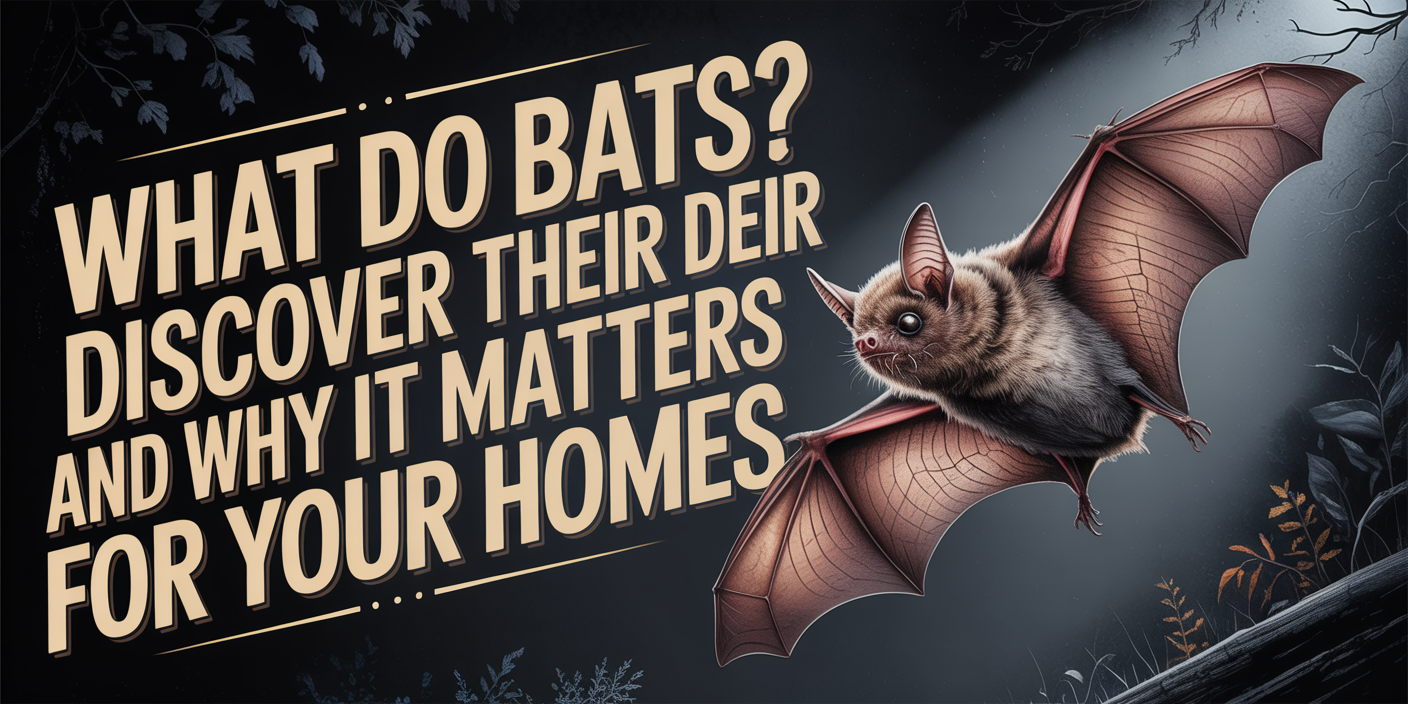Bats eat insects, fruit, nectar, small animals, and even blood—depending on the species. Most in the U.S. feed on mosquitoes, beetles, and other night-flying bugs.
Bats might seem spooky, especially when they swoop by at dusk or chatter from your attic, but their eating habits are a whole different story. As the only flying mammal, they have incredibly diverse diets that do more good than most folks realize, especially when it comes to pest control. Still, understanding their food choices can help you figure out why they’re showing up around your home and what to do if they’ve gotten a little too comfortable near your roofline.
Some snack on mosquitoes. Others go for fruit, nectar, or even frogs. Yep, frogs. The key is knowing what species of bat are common in your area and how their dinner menu overlaps with what’s in your backyard. If they’re there for the food, you’ve got options. This guide from AAAC Wildlife Removal breaks it all down so you can keep bats out of your attic and let them handle the insects somewhere else.
What Kind of Bats Eat What? A Breakdown by Diet
Not every bat is after blood or bugs, though those rumors sure stuck. In reality, bat diets are surprisingly varied and depend entirely on bat species and environment. From insect-devourers in the U.S. to fruit-lovers in the tropics, knowing which bats eat helps you understand why they’re in your area and what they’re looking for.
Let’s break it down by diet type and match it with the actual bats responsible.
Insectivorous Bats (Like the Little and Big Brown Bats)
Insectivorous bats are the most common in North America and probably the ones flapping around your porch light. These bats eat insects like mosquitoes, beetles, moths, flies, and gnats. One Myotis lucifugus, commonly referred to as a little brown bat, can eat over 1,000 insects in a single night, making it a quiet but powerful pest control ally.
They track their prey using echolocation, a natural sonar system that allows them to hunt with pinpoint accuracy in complete darkness. Other frequent insect-eaters include the evening bat (Nycticeius humeralis), the Mexican free-tailed bat (Tadarida brasiliensis), and the big brown bat (Eptesicus fuscus), which is known for adapting well to urban areas. These species often roost in attics, barns, or soffits, especially if there’s a steady bug supply and a cozy spot to hang upside down.
Fruit-Eating Bats (Like the Egyptian Bat and Jamaican Bat)
Frugivores munch on ripe bananas, mangoes, guavas, and soft-skinned fruit. Most are found in tropical regions like Central and South America, Asia, and parts of Africa. Species such as the Egyptian fruit bat (Rousettus aegyptiacus) and the Jamaican fruit bat (Artibeus jamaicensis) are well-known for their fruity preferences.
They play a huge role in seed dispersal and forest growth, but they’re not common in most U.S. neighborhoods. However, homes with fruit trees in southern Florida might occasionally attract curious travelers if the climate and food line up just right.
Nectar-Feeding Bats (Like the Lesser Long-Nosed Bat and Mexican Long-Tongued Bat)
Nectar-feeders are nature’s unexpected pollinators. They thrive on the sweet nectar of night-blooming flowers, including agave, saguaro cactus, and other desert plants. As they feed, they also collect and transfer pollen, helping native vegetation flourish in arid ecosystems. The lesser long-nosed bat (Leptonycteris yerbabuenae) and the Mexican long-tongued bat (Choeronycteris mexicana) are among the best-known pollinators.
You’ll mostly find these species in the Southwest U.S. and Mexico, where flowering cacti and desert blooms are abundant. Unless your garden doubles as a desert biome, these bats are more interesting than invasive.
Meat-Eating and Blood-Feeding Bats (Like the Greater Spear-Nosed Bat and Common Vampire Bat)
Yep, some bats are meat-eaters, and a few drink blood. Carnivorous species like the greater spear-nosed bat (Phyllostomus hastatus) go after small birds, rodents, lizards, or insects. Meanwhile, the infamous common vampire bat (Desmodus rotundus) licks blood from livestock in parts of Central and South America.
Before you panic, these bats are not native to the U.S. and won’t show up in your attic. Still, their unique diets prove how wide-ranging bat evolution really is, from bug hunters to full-on predators.
Where Bats Feed and Why It Affects You
Bats don’t just eat anywhere, they follow the food. Most insect-eating species follow dense bug populations in wide open spaces, anywhere a bat feeds successfully is where they’ll return night after night. They’ll circle ponds, hover near floodlights, and zip through backyards packed with bug activity. If you’re seeing more bats around dusk, it likely means your property is a prime hunting ground.
Fruit- and nectar-eating bats tend to stick to flowering trees, fruit-bearing plants, and tropical gardens. In more rural or suburban neighborhoods, they might show up around orchards, overripe fruit trees, or sweet-smelling blooms. While they prefer open skies and quiet spaces, some bats will feed shockingly close to homes if the food source is consistent, especially if the area is calm and unbothered.
Why Bat Diets Matter More Than You Think
Knowing what bats eat isn’t just fun trivia—it’s the first step to understanding why they’re suddenly hanging around your home. From insectivores patrolling your porch light to fruit-lovers eyeing your backyard trees, their mealtime preferences directly shape where they go and where they stay. If your property serves up easy access to bugs, nectar, or fruit, you’re basically setting out a welcome mat without realizing it.
The good news? You don’t need to live with bats to appreciate the perks they bring to the ecosystem. By recognizing what attracts them and working with local pros like AAAC Wildlife Removal, you can keep bats doing their thing—just not inside your attic. Give them space to feed elsewhere, and you’ll enjoy fewer nuisance, healthier gardens, and a lot less noise in the ceiling.




